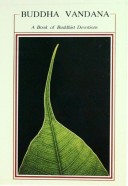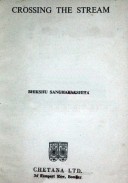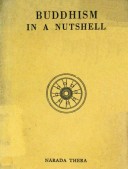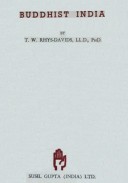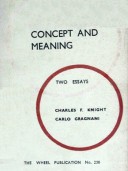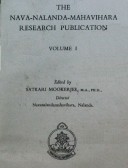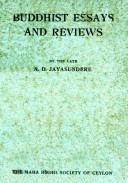Tìm Sách
Sách tiếng Anh-English >> Buddha Vandana
Thông tin tra cứu
- Tên sách : Buddha Vandana
- Tác giả : Walpola Piyananda
- Dịch giả :
- Ngôn ngữ : Anh
- Số trang : 72
- Nhà xuất bản : California - Dharma Vijaya Buddhist Vihara
- Năm xuất bản : 1990
- Phân loại : Sách tiếng Anh-English
- MCB : 12100000011623
- OPAC :
- Tóm tắt :
INTRODUCTION
In ten years, Dharma Vijaya Buddhist Vihara has grown from an old house sheltering a few Sri Lankan monks to a busy, vibrant center for Buddhists and friends of Buddhism from many countries.
Buddhism in America is certainly evolving and is sure to be different from Buddhism that we see in Southeast Asia. Yet we shouldn’t be too hasty in discarding the valuable elements of our traditions, which have withstood the test of time and successfully performed an important function in the lives of Asian people.
One such aspect is the role of chanting in Buddhist practice. Paritta chanting plays an important part in the religious life of Buddhist countries in Asia. We believe there is a great benefit to be derived from it, and we would like these benefits to be available to all those who come to the temple. To this end, we have now prepared this second, greatly expanded, edition of our Buddha Vandana booklet, first published in 1985.
Those who are familiar with the first edition, will find a number of new selections for chanting on different occasions. Texts have been added, some more instructional than devotional. In addition, we have ended the booklet with a brief section specifically for meditators. This will give those who are following the Buddha’s injunction (to “work out your own salvation with diligence”) a chance to become familiar with the instructions of the Buddha on meditation. A few words about the English translations: every single translation from the first edition has been reviewed carefully. The English chosen is not designed for beauty or for melodious chanting, but is as literal and faithful a translation of the Pali as is possible, given the limitations of space and the inherent problems of translating Pali terms into English terms (which are themselves loaded with their own cultural and religious implications). Pali is a most cogent language, getting right to the point with just a word or two. Where the suttas seem wordy, it is because of the characteristically repetitious style which was a mnemonic and pedagogical device for texts which were committed only to memory, not to paper, for several hundred years.
The existing translations of Pali texts are often widely divergent in interpretation. Many of these translations, along with various Pali dictionaries, as well as several learned monks, were consulted in preparing the translations for this booklet. The literal choice of one particular word in English often lacks the implications inherent in the Pali term in its cultural context. Where the translation is correct, but may leave some doubt as to its meaning in English without further elucidation, we have opted to leave the doubt. By being literal to as great an extent as possible, we leave the interpretation to dhamma discussion sessions.
This edition has undergone a thorough revision by a team consisting of myself, Ven. Lenagala Sumedhananda, Ven. Alubomulle Sumanasara, and by Stan Levinson, who prepared the manuscript. I wish to express my gratitude to both these able assistants and to all those who prepared the first edition and, in effect, made this revised edition possible.
For the printing of this book we express our thanks to Naỉin Nanayakkara, M.D., Mrs. Dhamayanti Seneviratne, M.D., and Mrs. Rohani Jayasena, whose generous donation was given in memory of their beloved mother; to Mrs. N.T. Nanayakkara, and father, Mr. G.N. Nanayakkara; and to my close friends Mr. Ronald and Mrs. Cathy Bogan.
May all beings be happy and realize Nibbana!
Ven. Walpola Piyananda
Nayake Thera and Abbot
Vesak, 1990 Dharma Vijaya Buddhist Vihara
CONTENTS
Introduction
DEVOTIONAL CHANTING
Vandanã, Tisarana, Paflca Sila………………………2
Buddha, Dhamma, Sartgha Vandană………………………4
Short Saluation to the Triple Gem………………………6
Offering of Light, Incense, Flowers………………………6
Offering of Water, Food, and Medicine………………………8
Homage to Stupas, Homage to the Bodhi Tree………………………8
Verses of Chatta, the Young Man………………………10
Verses of die Great Being (Narasiha Gatha) ………………………10
Jayamartgala Gãthă………………………14
Sharing Merit and Affirmation………………………18
A Sharing of Loving Kindess………………………20
PALI SUTTAS FOR CHANTING
Martgala Sutta………………………24
Ratana Sutta………………………28
Karaniya Metta Sutta………………………34
MettSnisamsa Sutta ………………………36
Mittănisamsa Sutta………………………38
Mahã jayamartgala Gãthã………………………40
BASICS OF BUDDHA’S TEACHING
Attha Mahã Purisa Vitakka………………………48
Dhamma-cakka-pavattana Sutta (selected text) ………………………50
Sacra vibhartga Sutta (selected text) ………………………56
Four Protective Meditations:
Buddhanussati………………………62
Mettã Bhãvanã………………………64
Asubha Bhãvanã………………………66
Marana Sati………………………66
Mahã Sanvega Vatthu………………………68
Mahs Sati-patthana Suttta (selected text) ………………………70
Summery of the Mahs Sati-patthSna Sutta………………………72
 Facebook
Facebook
 Google
Google
 Google+
Google+
